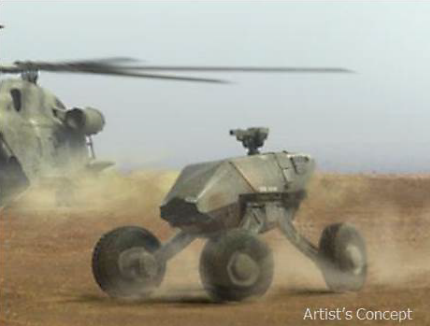Program would fortify armored vehicles without adding armor
DARPA’s is looking for technologies that could allow vehicles to dodge incoming fire or avoid enemy detection entirely.

Looking to shift the technology curve for armored vehicles, the Defense Advanced Research Projects Agency has started a new program to develop innovative techniques to make vehicles faster, lighter, more maneuverable and more autonomous, and to increase survivability without adding armor.
Armored vehicles, like nearly all military platforms, are limited by design tradeoffs. In order to improve one aspect of a vehicle, other capabilities may have to be cut or reduced. For instance, increasing the armor of a vehicle limits its ability to traverse certain types of terrain or may decrease its speed and maneuverability. Simply increasing the engine size or power doesn’t work either—larger engines and their respective fuel reserves take up more internal space, and thus increase the amount of armor needed.
To get around these limitations, DARPA’s newly created Ground X-Vehicle Technologies (GXV-T) program is investigating revolutionary techniques to improve the survivability and mobility of future armored vehicles—without increasing or adding armor, according to a DARPA release.
As weapon technology advances faster than armor technology, developing new types of physical protection is becoming less and less cost-effective. Using traditional armor techniques has also resulted in the use of heavy and expensive platforms that cannot be easily and rapidly deployed.
Because of these decreasing gains in mobility, cost and survivability, the new program is calling for “disruptive solutions” that would usher in the next-generation of armored vehicles.
“GXV-T’s goal is not just to improve or replace one particular vehicle—it’s about breaking the ‘more armor’ paradigm and revolutionizing protection for all armored fighting vehicles,” program manager Kevin Massey said in the release. “Inspired by how X-plane programs have improved aircraft capabilities over the past 60 years, we plan to pursue groundbreaking fundamental research and development to help make future armored fighting vehicles significantly more mobile, effective, safe and affordable.”
The GXV-T program will focus on four technical areas, according to the release:
Enhanced mobility. First, the program wants to radically improve mobility, enabling vehicles to travel over off-road terrain, move at extreme speed and make omnidirectional movement changes in three dimensions. Innovative suspensions and track/wheel configurations could be used to achieve this objective.
Crew augmentation. The second objective is to create a more autonomous system that could provide driving assistance and manage key crew functions traditionally operated by humans, as well as providing enhanced situational awareness.
Survivability through agility. Instead of using armor for protection, a major objective of the GXV-T program is the use of agility to increase survivability. Newly developed technologies could include the use of autonomous systems that could allow the vehicle to dodge incoming fire or actively reposition armor without harming vehicle occupants.
Signature management. The final objective is to further improve survivability by avoiding detection. The program will develop new signature management techniques to hide visible, infrared, acoustic and electromagnetic waves to better conceal the vehicle.
Ultimately, the program is looking to leverage technologies developed in and beyond these areas to reduce vehicle weight and size by 50 percent, reduce crew sizes by 50 percent, increase vehicle speed by 100 percent, access 95 percent of terrain, and reduce signatures that can be used to detect the vehicle.
DARPA will hold a Proposers’ Day for interested parties on Sept. 5. Registration for the event will close on Aug. 22. Initial contract awards are planned on or before April 2015, and selected technologies are expected to be developed over the 24 months after that date.